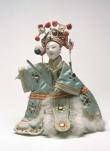AustLit

-
Folktales of Asia draws together a range of folktales from a number of countries in Asia. (Many more folktales from Asia however, can be found through a keyword search of the Asian-Australian Children's Literature and Publishing (AACLAP) subset. A folktale is a particular form of oral storytelling for expressing particular customs and traditions of a specific culture. Other forms of folklore include myths, legends, fairy tales, tall tales, parables, proverbs, riddles, games, and dances. These, mostly oral, art forms usually contain a moral or lesson to be learned. Folktales generally rely on a number of universally recognised motifs (recurring thematic elements) such as the Clever Wife, the Quest, a Foolish Servant, and so on which serve as mnemonic devices that promote the storyline without too much necessary explanation required. However, because folktales rely on these motifs, caution should be exercised so that readers are not drawn into uncritical acceptance of stereotypes and caricatures that could result in a flawed impression of a particular culture.
-
This dual (English & Vietnamese) language text recounts the story of the Moon Festival. Cuoi, a Vietnamese boy, lives with his aunt and uncle until they tire of his tricks and attempt to throw him in the river. He escapes and lives in the bush where he learns to survive for many years. He is guided by a spirit to return to his village and use the healing powers of the Banyan tree to cure people. The spirit warns that if ever the tree should fly away Cuoi should take hold of the roots and go with it as he will have the opportunity to meet a beautiful woman. (...more)See full AustLit entry
This folktale tells the origins of an important celebration in Vietnamese culture: the Moon Festival. Another text, Chu Cuoi's Magic Tree (see below) also tells the origins of the Moon Festival. These folktales display similarities but also differences - this is the nature of oral storytelling.
-
This play is based on a Vietnamese tale which explains how the man in the moon got there. When a tiger unknowingly leads Chu Cuoi to a tree with magic leaves he thinks he might be able to make some money from them. When the Emperor's daughter falls ill Chu Cuoi cures her with the leaves and is thus granted her hand in marriage. However, when the Princess digs in the soil around the magic tree it has unexpected consequences. (Source: Book)See full AustLit entry
(...more)Note the similarities and differences between this play based on a folktale and the Moon Festival (above).
-
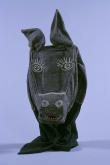 This image has been sourced from online.This play tells the story of a young Chinese couple, Chang and his wife. It is the day of the Moon Festival and Chang shows his wife the Puppet Theatre that he has made to take to the village that night for the festivities. Chang then goes to help his neighbour winnow rice and his wife dresses for the Moon Festival in her wedding dress and a family headdress that is quite valuable. A slave-trader comes to the house and abducts her. She calls to her husband but he only sees them disappearing on a horse. (...more)See full AustLit entry
This image has been sourced from online.This play tells the story of a young Chinese couple, Chang and his wife. It is the day of the Moon Festival and Chang shows his wife the Puppet Theatre that he has made to take to the village that night for the festivities. Chang then goes to help his neighbour winnow rice and his wife dresses for the Moon Festival in her wedding dress and a family headdress that is quite valuable. A slave-trader comes to the house and abducts her. She calls to her husband but he only sees them disappearing on a horse. (...more)See full AustLit entryThis is another story about the Moon Festival. Both Chinese and Vietnamese people celebrate the Moon or Mid-Autumn Festival. Again, there are similarities and differences between the origins of the story as well as the ways in which the festival is celebrated.
-
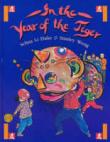 This image has been sourced from online.'This Chinese folk tale traces the cycles of village life through the rich community celebration of the Lion Dance performed during the Spring Festival. Chiu Wing and his neighbours eagerly await the festival each year.' (Source: Google Books) (...more)See full AustLit entry
This image has been sourced from online.'This Chinese folk tale traces the cycles of village life through the rich community celebration of the Lion Dance performed during the Spring Festival. Chiu Wing and his neighbours eagerly await the festival each year.' (Source: Google Books) (...more)See full AustLit entryThis Chinese folktale demonstrates the importance of festivals and celebrations in the life of a community.
-
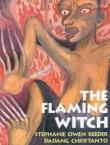 This image has been sourced from online.'Based on an Indonesian folk tale from the 14th century, this is the story of Rangda, a powerful witch who curses the whole kingdom when no one will marry her daughter because no-one wants a witch as a mother-in-law! The king tries to fight fire with fire, but soon realises that only wisdom can defeat the witch's terrible power.' (Source: Author's website)See full AustLit entry
This image has been sourced from online.'Based on an Indonesian folk tale from the 14th century, this is the story of Rangda, a powerful witch who curses the whole kingdom when no one will marry her daughter because no-one wants a witch as a mother-in-law! The king tries to fight fire with fire, but soon realises that only wisdom can defeat the witch's terrible power.' (Source: Author's website)See full AustLit entry
(...more)Many folktales rely on binary oppositions such as good versus evil or rich versus poor, but this story has a slight variation on this. It utilises the motifs of Wise King and Wicked Witch to prove that wisdom can defeat power.
-
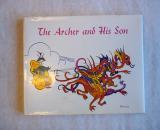 This image has been sourced from online.'A retelling of the birth of Korea (Koguryo], when the Sun Prince came down from heaven and married the daughter of a River God, whose son, Chu-Mong founded the land we know as Korea.' (Source: Bookseller's website) (...more)See full AustLit entry
This image has been sourced from online.'A retelling of the birth of Korea (Koguryo], when the Sun Prince came down from heaven and married the daughter of a River God, whose son, Chu-Mong founded the land we know as Korea.' (Source: Bookseller's website) (...more)See full AustLit entryThis is an example of a pourquoi or origin story in which the origin of something is explained. In this case the tale explains the birth of Korea (Koguryo). Another variation on the pourquoi story is the Just So stories made famous by Rudyard Kipling which explain the origins of animals' defining characteristics, eg the elephant's trunk.
-
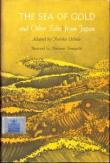 This image has been sourced from online.‘A folk tale from Japan about a humble sea cook whose lifetime of virtue is rewarded by the Sea King himself.’ (Source: Bookseller’s website) (...more)See full AustLit entry
This image has been sourced from online.‘A folk tale from Japan about a humble sea cook whose lifetime of virtue is rewarded by the Sea King himself.’ (Source: Bookseller’s website) (...more)See full AustLit entryVirtue is rewarded.
-
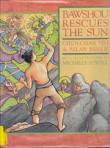 This image has been sourced from online.'Thousands of years ago, the King of Devils steals the sun, plunging the land into darkness. Bawshou sets out to rescue the sun, a task his father attempted unsuccessfully. Accompanied by a golden phoenix and guided by a shining star--the spirit of his dead father--Bawshou crosses swollen rivers, outwits evil villagers and eventually battles the King of Devils himself before liberating the sun from the devils' rocky outcropping.' (Source: Bookseller's website) (...more)See full AustLit entry
This image has been sourced from online.'Thousands of years ago, the King of Devils steals the sun, plunging the land into darkness. Bawshou sets out to rescue the sun, a task his father attempted unsuccessfully. Accompanied by a golden phoenix and guided by a shining star--the spirit of his dead father--Bawshou crosses swollen rivers, outwits evil villagers and eventually battles the King of Devils himself before liberating the sun from the devils' rocky outcropping.' (Source: Bookseller's website) (...more)See full AustLit entryThis is a Quest story in which good eventually triumphs over evil.
-
 This image has been sourced from Goodreads.'Out of kindness, Yo invites a strange man, with an unusual appetite and extraordinary strength, to stay on his farm. The stranger is a great help to Yo, but the whole district badly needs rain to break a severe drought. "Right, I shall arrange it", the stranger tells Yo. Feeling tired, Yo falls asleep. He awakens to find himself being transported on a wonderful journey, where he discovers the stranger's true identity and power.' (Source: Back cover) (...more)See full AustLit entry
This image has been sourced from Goodreads.'Out of kindness, Yo invites a strange man, with an unusual appetite and extraordinary strength, to stay on his farm. The stranger is a great help to Yo, but the whole district badly needs rain to break a severe drought. "Right, I shall arrange it", the stranger tells Yo. Feeling tired, Yo falls asleep. He awakens to find himself being transported on a wonderful journey, where he discovers the stranger's true identity and power.' (Source: Back cover) (...more)See full AustLit entryKindness is rewarded.
-
A retelling of the Vietnamese fable about two brothers. This is the fable: A long time ago, there was a rich man living in a village. When he died, he left his two sons a huge fortune. However, the greedy elder brother claimed the fortune and left the kind younger brother only a star fruit tree. When a raven eats the fruit the younger brother asks it to refrain as the fruit is his only source of income. To pay for the fruit the raven takes the younger brother to an island of gold. Predictably, when the older brother hears of this he tries to take advantage of both the raven and his brother but fails. (...more)See full AustLit entry
There are many different versions to this folktale. However, while the details of the story may change the moral remains largely intact.
-
Once again there are many versions of this tale (see below) of a scolding wife and a kind husband. One is rewarded and the other is punished.
-
-
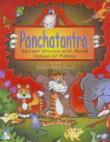 This image has been sourced from online.Panchatantra is a collection of ancient Indian fables that provides guidance on conduct by telling animal tales that teach moral lessons.See full AustLit entry
This image has been sourced from online.Panchatantra is a collection of ancient Indian fables that provides guidance on conduct by telling animal tales that teach moral lessons.See full AustLit entry
(...more)This collection of stories exhibits a defining characteristic of many folktales: they teach moral lessons.
-
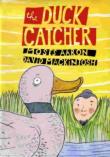 This image has been sourced from online.'Gombei catches just one duck a day because that is all the food he needs. When the days turn cold, however, he changes his mind. If he can catch a hundred ducks, he thinks, he won't have to work all winter long. Then Gombei walks into a trap!' Source: bookseller's website. (...more)See full AustLit entry
This image has been sourced from online.'Gombei catches just one duck a day because that is all the food he needs. When the days turn cold, however, he changes his mind. If he can catch a hundred ducks, he thinks, he won't have to work all winter long. Then Gombei walks into a trap!' Source: bookseller's website. (...more)See full AustLit entryAnother folktale in which the hunter becomes the hunted.
-
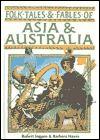 This image has been sourced from online.A selection of seventeen folktales from Asia and Australasia that includes 'Baba Yaga and the Stepdaughter,' 'The Bridge of Magpies,' 'Rainbow Serpent' and 'Maui, the Fisherman.' (...more)See full AustLit entry
This image has been sourced from online.A selection of seventeen folktales from Asia and Australasia that includes 'Baba Yaga and the Stepdaughter,' 'The Bridge of Magpies,' 'Rainbow Serpent' and 'Maui, the Fisherman.' (...more)See full AustLit entryThis selection of folktales and fables from Asia and Australia showcases the universal qualities as well as regional differences between stories from these two continents.
-
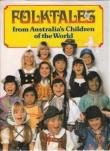 This image has been sourced from online.A collection of thirty-three folktales from diverse national cultures that have contributed to Australia's heritage. Each tale is presented in English and followed by the language of the story's origin. The stories have been collected from community groups across Australia but makes no claims to the significance of the collection to identifying multiculturalism in Australia. The project was initiated by M.J.R. MacKellar, Minister for Immigration and Ethnic Affairs at the time of production and Federal Liberal M. (...more)See full AustLit entry
This image has been sourced from online.A collection of thirty-three folktales from diverse national cultures that have contributed to Australia's heritage. Each tale is presented in English and followed by the language of the story's origin. The stories have been collected from community groups across Australia but makes no claims to the significance of the collection to identifying multiculturalism in Australia. The project was initiated by M.J.R. MacKellar, Minister for Immigration and Ethnic Affairs at the time of production and Federal Liberal M. (...more)See full AustLit entryTales from Asia included in this volume are Chinese, Indonesian (Bahasa Indonesian), Indian (Hindi), Pakastani (Urdu), Thai and Japanese reflecting the diversity of cultural and linguistic backgrounds of the people of Australia.
-
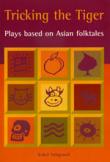 This image has been sourced from online.'A ghostly trickster, winning a princess, the exploits of a thief, brothers sharing an inheritance, a seductive portrait . . . and more. These folk tales are from Papua New Guinea, Korea, Pakistan, India, Bangladesh, Vietnam, Japan and Indonesia'. (Source: author's website.)See full AustLit entry
This image has been sourced from online.'A ghostly trickster, winning a princess, the exploits of a thief, brothers sharing an inheritance, a seductive portrait . . . and more. These folk tales are from Papua New Guinea, Korea, Pakistan, India, Bangladesh, Vietnam, Japan and Indonesia'. (Source: author's website.)See full AustLit entry
(...more)These plays, based on folktales from Asia, contain a number of familiar motifs such as a trickster, a thief, two brothers and an inheritance.
-
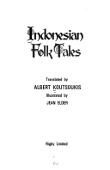 This image has been sourced from online.Twelve Indonesian folk tales, with English translation, each accompanied by questions and activities. (...more)See full AustLit entry
This image has been sourced from online.Twelve Indonesian folk tales, with English translation, each accompanied by questions and activities. (...more)See full AustLit entryThis volume contains twelve Indonesian folktales, accompanied by English translations.
You might be interested in...


